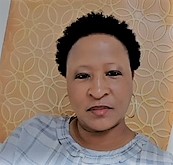Asking the right questions lead to recognizing key stakeholders. Ideally, organizations desire to serve the most by being efficient. This is an unrealistic premise with competing organizations. Stakeholders will work towards unclear expectations and will perform based on what they think they should do and meet the needs of unintended clients. Kenny (2018) provides five questions that aid leadership teams in pinpointing key stakeholders: 1. “Does the stakeholder have a fundamental impact on your organization?” 2. “Can you clearly identify what you want from stakeholders?” 3. “Is the relationship dynamic — that is, do you want it to grow?”4. “Can you exist without or easily replace the stakeholder?” and 5. “Has the stakeholder already been identified through another relationship?” Consulting with colleagues, service providers, board of directors and employees, while this is not an exhaustive list to facilitate leadership single-mindedness, demonstrate leadership awareness of stakeholders’ needs and interests. The onion model can be utilized to differentiate stakeholder relationships. Each stakeholder will have their own needs and expectations. Interfacing relationships are illustrated in the order of importance. Identify commonality by grouping stakeholders with the most shared needs with the objective of engaging those with the most needs.
The development and implementation of an effective stakeholder management plan entail setting clear expectations and planning project processes. This starts with the team leader identifying members, their functions and areas of influence. The team leader must accurately identify key influencers or face the likelihood an overlooked or ignored stakeholder will voice their discontent. The untimely voice of discontent may derail or stop production of the project (Baker, 2012). This imbalance may result in stakeholders perceiving the team leader as incompetent and cause other stakeholders to question their credibility. Rather than provide input as to why they are not a stakeholder, apologize and agree. PMBOK states, anyone self-identifying as a stakeholder should be embraced and readily accepted as a stakeholder. Ignoring their self-identification may be counterproductive to meeting the needs of stakeholders. Relationships and social networking are interrelated and conducive for successful project completion and stakeholders wield influence over the direction of organizations (Baker, 2018).
Expectations are a breastplate for an efficient stakeholder management plan. Whatever stakeholders expect, that is the project outcome. Inexperienced non-profit organizations struggle in this area and may come across as defensive and feel challenged with board of directors’ inquiry about services and why everyone walking through its doors is served. Expectations provide a clear course of action so that those needing the most can be sustained. Two critical components leading to effective stakeholder management plan development and implementation are product requirements (features and function of the project’s end product) and process requirements (keeping stakeholders inform about project status, delays, or challenges). Team leaders fail to realize that whatever they do is an expectation and whatever they fail to do is an expectation. They must ready themselves to face stakeholders who will be unhappy. It is not so much as the unhappiness stakeholders will experience as much as the leader demonstrating skill to move the project forward. To implement stakeholder management plan, the leader facilitates the identification of stakeholders, understands the social network among stakeholders and continually engages in the social network Miscommunication or the lack of effective communication require patience and willingness to understand the disconnect with a keen interest in reestablishing a connection with stakeholders. This notion must be carried out by making oneself vulnerable while being honest, trustworthy and salient throughout the process.
Addressing Stakeholder Opposition
Stakeholder opposition will not go away. Embrace it. Reach out to stakeholders. Preferably, seek clarification one-on-one. Anticipate dissent. Rather than become frustrated, see it as opportunity to learn, resolve and move the organization closer towards its mission. All efforts to create confusion should be fueled through cooperation, collaboration and acceptance that some issues will not be resolved. Be comfortable in analyzing and readily accepting criticisms. Convert defeat into triumph. Finally, reassessment is essential in creating a sustainable organization that is ready for success (Mayers, 2005).
Who Gets the Greatest Attention?
Everyone identifying themselves as a stakeholder gets attention. Isolate them at various times so they perceive themselves as valuable and that their voices are heard. Isolating them is giving them individual attention that is genuine. Their opinion matters. This requires savviness on the part of the team leader. Tone of voice, openness and transparency are effective ways in making stakeholders feel they are valued and attended to (Freidman, 2017; Barnett, 2011; and Mayers, 2005). When in a group setting exercise diplomacy, watch for non-verbal cues and give the appearance of being confident and when a question is asked that is unknown, voice not knowing and indicate finding the answer. Follow up with the answer in a reasonable manner.

